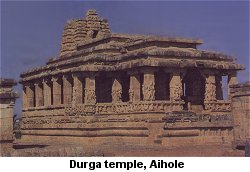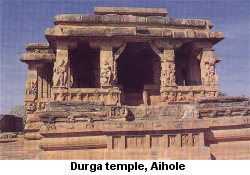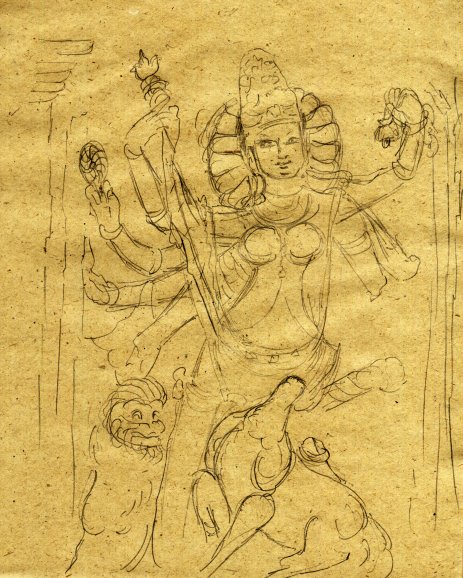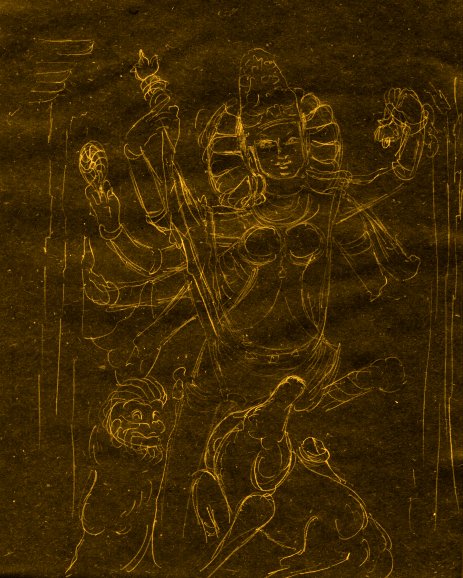STATES AND UNION TERRITORIES OF INDIA
KARNATAKA
Aihole
Aihole
on the banks of the Malaprabha river was the first capital of the Early
Western Chalukyas. There are innumerable temples in Aihole, Badami
& Patadakkal. There are around 70 small mandapa type temples
in and around the village, which used to be known in earlier days as Aryapura
or Ayaavole. The temples belong to two ages, first in the 6th & 7th
centuries and a second set of temples belonging to the 12th & 13th
centuries. They were constructed out of the locally available sandstone,
which was easy to use for construction in raising the building & also
for carving the sculptures.
The Konti-
gudi group of temples are the most simplest in form & considered
the oldest. There are three shrines one facing east. Two other
temples facing west are joined to each other by a pillared potico.
The Ladh
Khan temple is of a mandapa type, a rectangular structure with a flat
roof of stone slabs. The plan of the building suggests that it could
have been a village meeting hall, rather than a typical shrine of worship.
This mandapam was used by a Muslim mendicant in the last century &
hence it is known as Ladh Khan temple. It is considered to be a temple
for Surya Naaraayana.
 
The Durga
temple is a more developed structure, resembling a Buddhist Chaitya.
Standing on a high base, the temple has a mukha mandapa, sabha mandapa
& garba griha with a passage bordered by pillars with carvings.
There is a small pyramidal sikhara over the garba griha. There are
some wonderful scuptures.
 
A Sketch of Mahishasuramardini,
Durga temple, Aihole
On one side are the carvings of Siva on
his Rishaba vaahnam, Narasinhaa(Vishnu as a half man, half lion) &
Vishnu on his Garuda vaahanamon one side and Vaarahar (Vishnu in the form
of a boar), Hariharan (form of Vishnu-Hari & Siva-Haran) & Mahishasura
Mardini trampling the buffalo demon on the other side.
There are
two rock cut cave temples, a Hindu temple - Raavana-Phadi & a Jain
temple.
The Raavana-Phadi
temple, excavated on a hillock probably belonged to the 7th century.
The square shrine housing a rock-cut linga is almost the same saize
as the square mandapa before it. On the ceiling of the chamber connecting
the front square mandapa & the main shrine are carvings of Lord Vishnu
on his Garuda Vaahanam, a central lotus design & Indraa on his Airaavatam.
On either side of the mandpa, two more shrines have been excavated, the
shrine on the left for forms of Siva & the other for Saptamatrikas.
The Jain
temple is partly rock cut & partly structural. The rectangular
shrine at the rear houses the image of a Thirthankara.
Other temples:
Huchchimalli-gudi on the outskirts of the village, built in the 8th century
with fine sculptures, the Uma Maheswari Temple, Meguti, a Jain temple,
built on a hill is one of the most developed structure in the mandapa style.
|